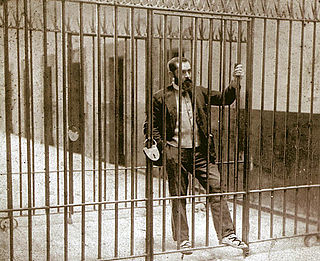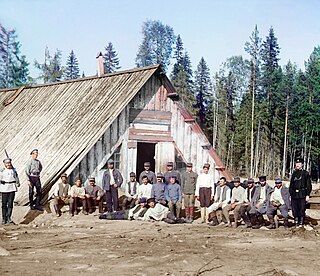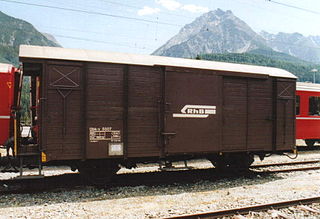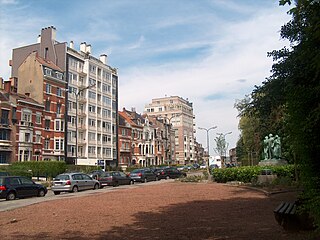
Henri Honoré Giraud was a French general who was captured in both World Wars, but escaped both times.

Countess Andrée Eugénie Adrienne de Jongh GM was a member of the Belgian Resistance during the Second World War. She organised the Comet line for escaped Allied soldiers and airmen. After the war, she worked in leper hospitals in Africa.
MI9, the British Directorate of Military Intelligence Section 9, was a department of the War Office between 1939 and 1945. During World War II it was tasked with supporting available European Resistance networks and making use of them to assist Allied airmen shot down over Europe in returning to Britain. MI-9 infiltrated agents, usually by parachute, into occupied Europe. These agents would link up with a Resistance cell and organize escape-and-evasion efforts in a particular area, usually after being notified by the Resistance of the presence of downed airmen. The agents brought false papers, money and maps to assist the downed airmen.

Saint Helen's Island is an island in the Saint Lawrence River, in the territory of the city of Montreal, Quebec, Canada. It is situated immediately southeast of the Island of Montreal, in the extreme southwest of Quebec. It forms part of the Hochelaga Archipelago. The Le Moyne Channel separates it from Notre Dame Island. Saint Helen's Island and Notre Dame Island together make up Parc Jean-Drapeau.
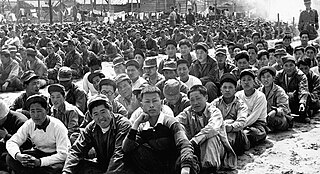
A prisoner-of-war camp is a site for the containment of enemy combatants captured by a belligerent power in time of war.
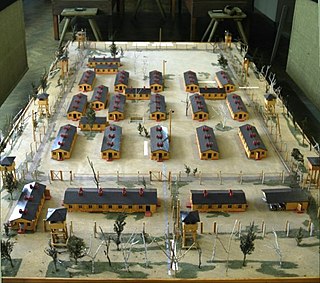
Stalag Luft III was a Luftwaffe-run prisoner of war (POW) camp during the Second World War, which held captured Western Allied air force personnel.

Von Ryan's Express is a 1965 World War II adventure film directed by Mark Robson and starring Frank Sinatra and Trevor Howard. The screenplay concerns a group of Allied prisoners of war who conduct a daring escape by hijacking a freight train and fleeing through German-occupied Italy to Switzerland. Based on the novel by David Westheimer, the film changes several aspects of the novel, most notably the ending, which is considerably more upbeat in the book. Financially, it became one of Sinatra's most successful films.

"The March" refers to a series of forced marches during the final stages of the Second World War in Europe. From a total of 257,000 western Allied prisoners of war held in German military prison camps, over 80,000 POWs were forced to march westward across Poland, Czechoslovakia, and Germany in extreme winter conditions, over about four months between January and April 1945. This series of events has been called various names: "The Great March West", "The Long March", "The Long Walk", "The Long Trek", "The Black March", "The Bread March", and "Death March Across Germany", but most survivors just called it "The March".

Stalag IX-C was a German prisoner-of-war camp for Allied soldiers in World War II. Although its headquarters were located near Bad Sulza, between Erfurt and Leipzig in Thuringia, its sub-camps – Arbeitskommando – were spread over a wide area, particularly those holding prisoners working in the potassium mines, south of Mühlhausen.

The Raid at Ožbalt was an operation on 31 August 1944 in which 105 Allied prisoners of war (POWs) were rescued by Slovene Partisans. The majority were liberated from a work site at the village of Ožbalt about 25 kilometres (16 mi) west of Maribor on the railway line to Dravograd in the German Reichsgau Steiermark (Styria), now part of modern-day northern Slovenia. Six of the liberated POWs were separated from the group during an engagement with the Germans a few days after their liberation, but following a 14-day trek across 250 kilometres (160 mi) they were flown out of a Partisan airfield at Semič to Bari, Italy. The successful escapees consisted of eight Frenchmen, nine New Zealanders, 12 Australians, and 70 British POWs.

Stalag Luft VI was a German prisoner-of-war camp during World War II located near the town of Heydekrug, Memelland. It was the northernmost POW camp within the confines of the German Reich.

Stalag Luft I was a German World War II prisoner-of-war (POW) camp near Barth, Western Pomerania, Germany, for captured Allied airmen. The presence of the prison camp is said to have shielded the town of Barth from Allied bombing. About 9,000 airmen – 7,588 American and 1,351 British and Canadian – were imprisoned there when it was liberated on the night of 30 April 1945 by Russian troops.

The Comet line was a resistance group in Belgium and France that helped Allied soldiers and airmen return to Britain during the Second World War. The line started in Brussels where the men were fed, clothed and given false identity papers, before being hidden in attics or cellars. A network of people then guided them south through occupied France into neutral Spain and home via British-controlled Gibraltar.
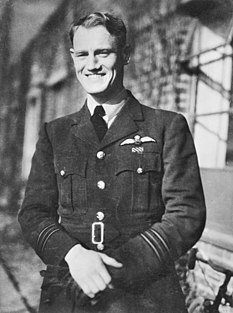
Phillip John Lamason DFC & Bar was a pilot in the Royal New Zealand Air Force (RNZAF) during the Second World War, who rose to prominence as the senior officer in charge of 168 Allied airmen taken to Buchenwald concentration camp, Germany, in August 1944. Raised in Napier, he joined the RNZAF in September 1940, and by April 1942 was a pilot officer serving with the Royal Air Force in Europe. On 8 June 1944, Lamason was in command of a Lancaster heavy bomber that was shot down during a raid on railway marshalling yards near Paris. Bailing out, he was picked up by members of the French Resistance and hidden at various locations for seven weeks. While attempting to reach Spain along the Comet line, Lamason was double-crossed by a traitor within the Resistance and handed over to the Gestapo.
Between 20 August and 19 October 1944, 168 allied airmen who were held prisoner at Buchenwald concentration camp. Colloquially, they described themselves as the KLB Club. 166 airmen survived Buchenwald, while two died of sickness at the camp.
Peter Harding was an RAF reconnaissance pilot, World War II Prisoner of War and participant in The Great Escape from Stalag Luft III, Peter Harding was a significant figure in the student life of the Royal School of Mines from 1946 until his death on 24 January 2006 at the age of 86. He conveyed historically useful information concerning the liberation of Allied POWs from Nazi camps at the end of World War II.

Heinz Schnabel and Harry Wappler were two Second World War German prisoners of war who escaped from a British prison camp and attempted a daring, but ultimately unsuccessful, flight to the continent in a stolen aircraft on 24 November 1941.

Włodzimierz Adam Kolanowski was a Polish Vickers Wellington bomber “Observer and Captain” flying from England when he was taken prisoner during the Second World War. He is notable for the part he took in the 'Great Escape' from Stalag Luft III in March 1944 and as one of the men recaptured and subsequently shot by the Gestapo.

Mathilde Adrienne Eugénie Verspyck "was a brave woman who was a devoted believer in the cause of freedom, for which she later sacrificed her life," according to her U.S. Medal of Freedom award.





